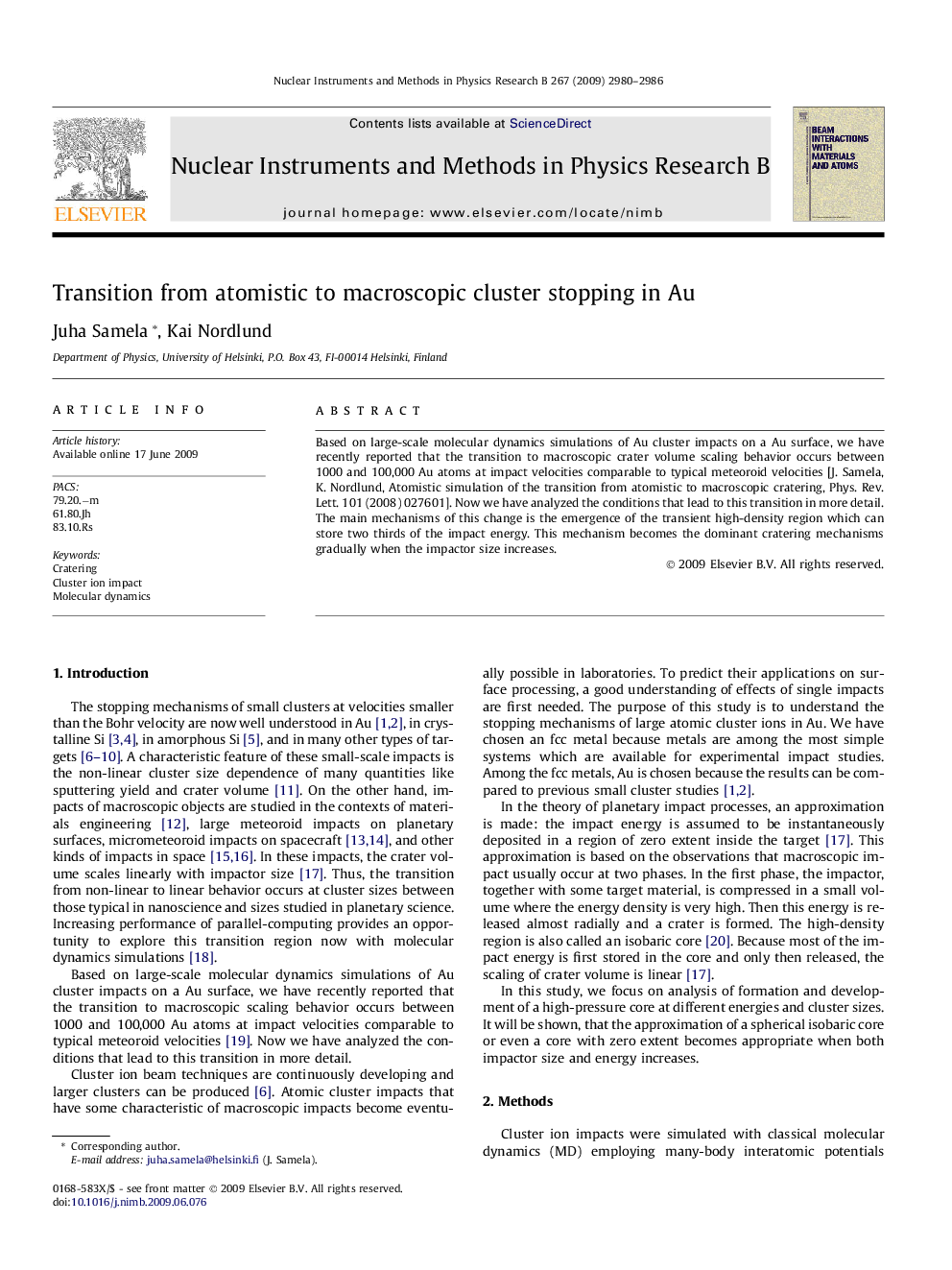| Article ID | Journal | Published Year | Pages | File Type |
|---|---|---|---|---|
| 1686973 | Nuclear Instruments and Methods in Physics Research Section B: Beam Interactions with Materials and Atoms | 2009 | 7 Pages |
Abstract
Based on large-scale molecular dynamics simulations of Au cluster impacts on a Au surface, we have recently reported that the transition to macroscopic crater volume scaling behavior occurs between 1000 and 100,000 Au atoms at impact velocities comparable to typical meteoroid velocities [J. Samela, K. Nordlund, Atomistic simulation of the transition from atomistic to macroscopic cratering, Phys. Rev. Lett. 101 (2008) 027601]. Now we have analyzed the conditions that lead to this transition in more detail. The main mechanisms of this change is the emergence of the transient high-density region which can store two thirds of the impact energy. This mechanism becomes the dominant cratering mechanisms gradually when the impactor size increases.
Keywords
Related Topics
Physical Sciences and Engineering
Materials Science
Surfaces, Coatings and Films
Authors
Juha Samela, Kai Nordlund,
